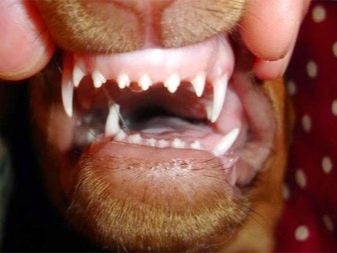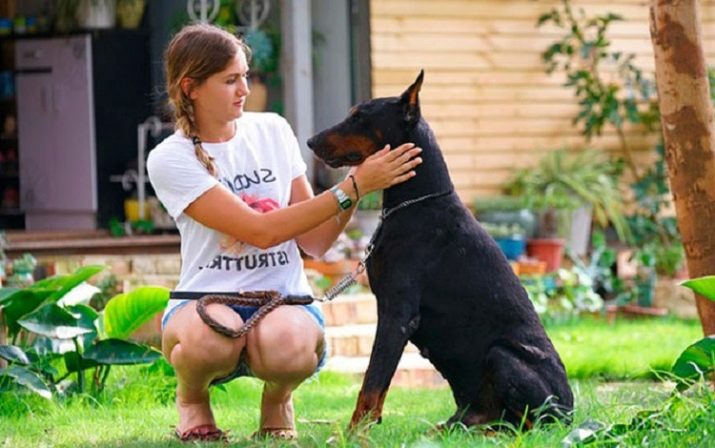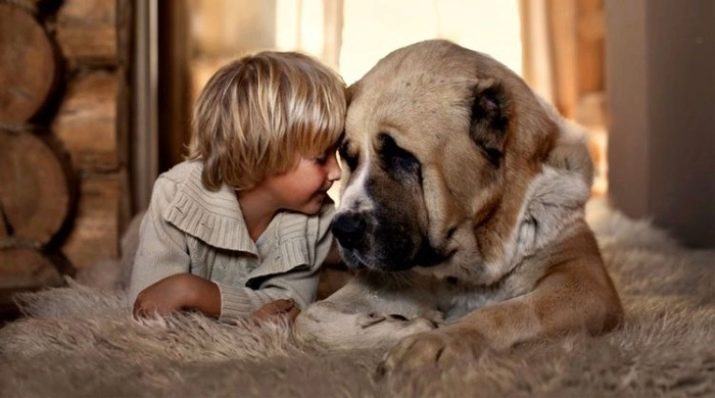Dogs have served humans for hundreds of years. Being smart pets, they helped people in a variety of ways. Any owner of these four-legged creatures cares about the life span of his dog, and for this reason, through observation and research, the ratio of human years to canine was found.
There are three ways to find out the age of a dog compared to human years, of which one is simple and quick.

How to find out the age of the dog?
Determining the age of the dog visually is quite difficult. It is easy to distinguish an adult dog from a newborn puppy, however, only the knowledge of all the signs of a given year of life will help to understand the exact age of the animal. Below is a table that will help to accurately determine the age of the pet by such a feature as the quality of the teeth.
Dog's age (year): | 1 | 2 | 5 | 9 | 10,11 | 13 | 15 |
Features specific to this age | The teeth are in excellent condition, the hair completely covers the body of the animal and is thick. The pet is playful and active on walks. | When stroking a dog, you can easily feel the muscles. The teeth are in good condition, only on fangs, with careful consideration, signs of wear can be seen. | The tooth enamel turns yellow, the fangs lose their sharpness. The animal changes its habits and lifestyle: it becomes more balanced. | Fangs become dull, teeth have traces of grinding. The dog sleeps a lot, moves less. | The teeth are loose, have large formations of caries. Often in dogs of advanced age obesity is observed. | Teeth fall out, pupils are cloudy. The hair grows dull in the area of the muzzle. The joints and elbows undergo the formation of corns. | By this age, all teeth are missing.Dogs of such advanced age can behave strangely: bark at the owners, refuse to eat. For dogs, this is most often the maximum age of life. |


It should be remembered that You can determine the age of the dog using the table approximately: you need to find out more accurate based on the date of birth. This is because the quality of the coat, teeth, and physique also depends on the environment. Homeless mongrels quickly lose muscle because of a poor diet, and hair can be affected by diseases (lichen, skin diseases).
In the home environment, when the dog is given attention and care, the situation is the opposite: the quality of its teeth and coat is above average, because loving owners monitor the health of the pet.
For this reason, the data in the table can be treated no more than critically.

Ratio of years
In order for a person to understand without difficulty how long dogs live on average, several methods have been created to calculate the “human” age of the animal. So, the owners of the four-legged understand how old the pet is, and can focus on this figure. It is impossible to say exactly how old a dog is by human standards: three different methods of calculation create confusion. The differences between them are not too big, but they need to be taken into account. So, if according to a simplified calculation the dog is 35 years old, according to LeBo’s theory he is 45.
Before proceeding to the calculation, it is necessary to understand that it is impossible to find the perfect balance of human life with a dog. Each dog has its own individual life, which includes the influence of the environment. This suggests that even after studying the average length of life of a particular breed, it is impossible to accurately understand how old the animal is in human terms. For this reason, the age of the dog should not be combined with the human.

Simplified calculation
In the XX century, the first, still primitive calculation of canine and human years came into being. The creators were veterinarians who needed to know approximately how the life spans of a person and a dog correlated. Veterinarians did not delve into this issue and study different dog breeds, but took an average lifespan of 10 years. The life expectancy of a person at that moment fluctuated greatly, and the arithmetic average of 70 years was taken into account.
Thus, a simplified calculation of life expectancy appeared, which was reduced to a simple conclusion: 1 canine year is 7 human years. And although such a calculus cannot be called accurate due to the individual data of each dog breed not included in the calculation, the simplified method was most widely used among people because it was quickly remembered and was easy to use. The correspondence table below allows you to find out how many “human” years a pet is according to a simplified calculation method.
Dog Age: | 1 year) | 2 | 5 | 8 | 9 | 10 | 13 | 15 |
Human Age: | 7 years) | 14 | 35 | 56 | 63 | 70 | 91 | 105 |
Being the most popular, simplified calculation takes the last place in accuracy. The method does not take into account any data (dog breed, first years of life), which means that it cannot transfer age according to these signs.
Veterinarians simply created a simple way to explain to the owners of the dogs what period of life (youth, old age) goes with the pet.

LeBoe's Theory
A simple calculation method did not satisfy the French veterinarian A. LeBaugh, because of which he decided to study the biological characteristics of dogs. LeBoe found out that the first year of a dog’s life cannot be considered as 7 years, because in 365 days the dog is fully formed as an adult, which cannot be said about a seven-year-old child. That is how a theory appeared in 1953, based on which the first year of the dog’s life was considered as 15 human years. The second year of canine existence must be considered as 9. Thus, a dog at the age of 2 years is equal to a 24-year-old person.
The logic of this decision is due to the fact that the growth and development of four-legged pets ceases after two years of life, and the dog is a formed creature.


In his studies, the veterinarian took into account the following characteristics:
- life expectancy;
- puberty, readiness for reproduction - in most breeds, puberty occurs during the first year of life;
- the age of maturity, the moment when the dog is fully formed as an adult - basically this is the biennial age of the animal.
The table below takes into account the average weight category of dogs whose weight begins with 15 kg but does not exceed 45.
Dog Age: | 1 year) | 2 | 5 | 8 | 9 | 10 | 13 | 15 |
Human Age: | 18 years) | 27 | 45 | 63 | 69 | 75 | 90 | 100 |
Like the other two methods, LeBo's theory has been repeatedly criticized. However, the presence of variables such as puberty and maturity highlight LeBo's theory as a more accurate way to determine an animal’s age by human standards.

Kleiber's Law
In 1930, in Switzerland, the scientist Max Kleiber describes a rule that connects body mass (weight) with individual metabolism (the rate at which food is completely digested). The law applies not only to dogs, but also to all animals; it is suitable for determining the “human” years of a cat or a parrot. Today, Kleiber’s law also applies to plants.
In plain language the law establishes the relationship between the mass of the dog and the metabolism: the larger the animal in size, the longer it will live. That is, small breeds of dogs with a fast metabolism will live for a certain period less than a Russian wolfhound. The problem with the calculations is the average heart rate of the dog.
A wide range of rocks suggests different development of the cardiovascular system, which may cause discrepancies in the table, which is compiled according to Kleiber’s law.

The table is designed for the average weight of dogs (10-25 kg).
Dog Age: | 1 year) | 2 | 5 | 8 | 9 | 10 | 13 | 15 |
Human Age: | 15 years) | 24 | 37 | 51 | 56 | 60 | 72 | 80 |
The Kleiber method has medium accuracy. It takes into account the weight and metabolism of a living creature, so the number of years may vary individually for each individual. The advantage of the law is that it is universal and suitable for any living creatures, which cannot be said about other methods of calculation.


Account Errors
There are many errors in the calculations. Each dog has an individual development, which is why it is practically impossible to precisely determine the “human” age. Some errors are found most often.
- In a simplified calculation, the first year is considered to be 7 years. The first 365 days in a dog’s life are underestimated - at this time, the development of the animal occurs at a double pace. Muscles form, preparation for puberty is in progress. For this reason, counting the first year of a dog’s life as 7 is wrong. To avoid mistakes, you need to take the first 12 months as 14-15 human years.
- The second year of life of the dog is also attributed to important periods of the dog’s life. While the simplified calculation considers the second year as 7, you need to take it as 9-10 years. This often causes confusion in the calculations, but these conditions cannot be neglected.
- Kleiber's Law does not specialize in dogs. For this reason, factors such as breed and physiological characteristics of the pet are not taken into account in the equation. Therefore, Kleiber’s law does not have accuracy when a four-legged breed implies a shorter lifespan than other breeds.








































